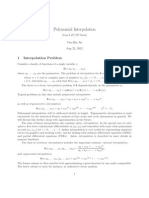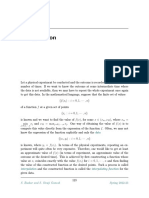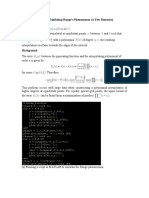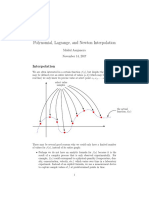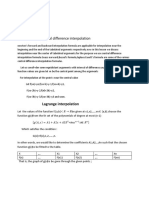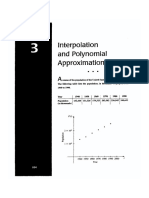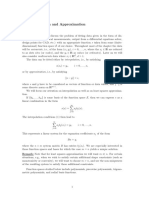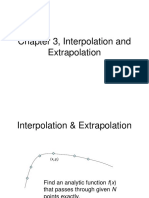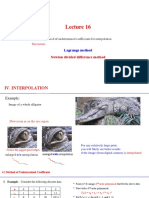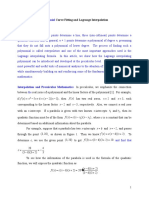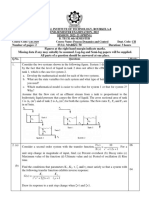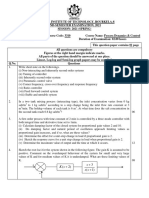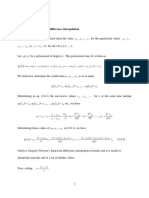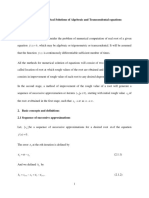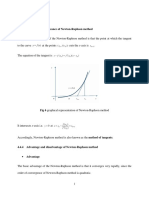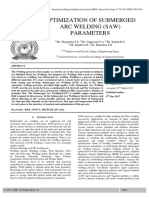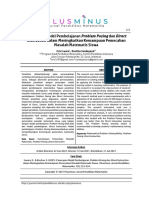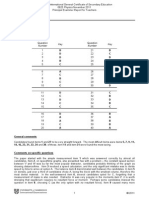0% found this document useful (0 votes)
89 views4 pagesChapter 3: Interpolation
The document discusses polynomial interpolation, which is a method of approximating an unknown function using a polynomial that matches the function's known values at certain input points. It states that any continuous function on a closed interval can be approximated as closely as desired by a polynomial according to the Weierstrass approximation theorem. Polynomial interpolation finds the unique polynomial of degree n that passes through n+1 known data points, forming a system of linear equations that can be solved using Cramer's rule. Geometrically, the unknown function is approximated by a parabola that intersects the known data points.
Uploaded by
Goura Sundar TripathyCopyright
© © All Rights Reserved
We take content rights seriously. If you suspect this is your content, claim it here.
Available Formats
Download as PDF, TXT or read online on Scribd
0% found this document useful (0 votes)
89 views4 pagesChapter 3: Interpolation
The document discusses polynomial interpolation, which is a method of approximating an unknown function using a polynomial that matches the function's known values at certain input points. It states that any continuous function on a closed interval can be approximated as closely as desired by a polynomial according to the Weierstrass approximation theorem. Polynomial interpolation finds the unique polynomial of degree n that passes through n+1 known data points, forming a system of linear equations that can be solved using Cramer's rule. Geometrically, the unknown function is approximated by a parabola that intersects the known data points.
Uploaded by
Goura Sundar TripathyCopyright
© © All Rights Reserved
We take content rights seriously. If you suspect this is your content, claim it here.
Available Formats
Download as PDF, TXT or read online on Scribd
/ 4




